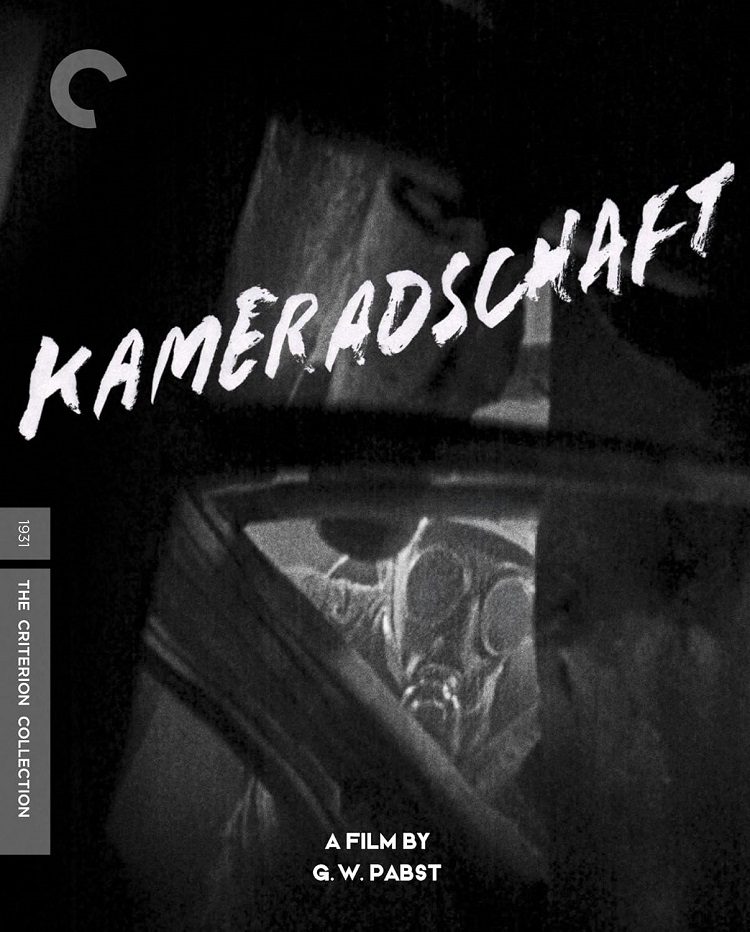
It’s difficult to separate Kameradschaft from its historical context. Released in 1931, this story of cooperation between French and Germans in a mining disaster on the border came out just two years before the Nazis gained electoral power in Germany. It was a time of street fighting and political instability, and apparently not a time when German audiences wanted to see a heartfelt plea for international community (according to the Luc Sante essay that accompanies this Criterion Collection release, it played to empty houses on release). Director G.W. Pabst’s film was a cry in the dark, unheard and unheeded.
So, if one isn’t a Pabst biographer or writing an essay on unsuccessful German films of the ’30s, what does Kameradschaft have to offer one today? A tense, swiftly paced and well-crafted disaster film, with some astonishing visual sequences chronicling the disaster, and in the subsequent rescue.
The action takes place at a mine that crosses the French and German border. Men cross the border frequently, but work is hard to find in either place, and there is no great love between the neighbors: in an early sequence, three German miners visit a French dance hall, and a misunderstanding nearly turns into a brawl on the dance floor. In true disaster film fashion, there is no real central character to the drama but rather an ensemble with various archetypes whose stories are interwoven in the narrative: the bluff German mining trio; the woman who loves a man but is leaving for Paris because she won’t marry a miner; the old man, long retired from the mines whose grandson is a new worker. There are sequences in the mine as the workers shovel coal, get covered in dust, build new walls to hold in fires and gas and blow new holes in the earth with dynamite.
Then the disaster occurs: a shoddily built wall collapses, fire ignites pockets of gas and the entire mine starts to cave in around the workers. It’s here where Pabst visuals astonished: ceilings collapse and fire belches inches above men’s heads. Modern films can show anything, and subsequently everything they show has a diminished power. With the usual exception of a shot or two that’s clearly practical, the answer to nearly every “How did they do that?” in a modern film is, “computers.” Understanding the technical limitations 1930s filmmakers were under with Kameradschaft and seeing some of the apparent near misses and danger, even if it’s just a clever illusion, made the scenes designed to thrill all the more thrilling. All of the mine sequences were shot on meticulously constructed sets that looked, and appeared to collapse, like the real thing.
A real sense of claustrophobia is built and maintained in those cramped and dangerous mine tunnels. Kameradschaft has plenty of other arresting images up its sleeve, such as the press of the French wives and mothers, bending in the bars of the gates while they beg to be told what has happened to their men. On the German side, there’s a scene inside what had to be a real mining facility where the men showered. Hundreds of chains hang from the ceiling, where the men would stow their equipment then lift it up out of the way. It’s cavernous and industrial, and looks a little surreal, as do the rescue squads bulky suits with gas masks attached.
It’s in this huge room that the German miners debate what they should do. Their mine is safely walled off from the French side. The French have their own rescue squads. Whatever happens there, it doesn’t have to directly affect them… but as one man says, “There are never enough rescuers.” Since the title of the movie, Kameradschaft, means something close to “comradeship”, it’s not much of a spoiler to say that the Germans come to the aid of the French, officially with their rescue squads and even unofficially with some miners digging their own holes on the German side to come to the rescue (or ending up needing rescuing themselves.)
As a bit of internationalist propaganda, Kameradschaft may be a little naive in its worker solidarity overcoming national borders theme. As just a story, though, it’s an exceptionally well-crafted early disaster film. The characters do not rise above stereotypes (nor are they intended to) but the action and images are thrilling, sometimes astonishing. It’s a rare early sound film that doesn’t give up visual identity for the novelty of noise.
Kameradschaft has been released on Blu-ray by The Criterion Collection. It’s an old film, only recently restored with some elements taken from different prints. On the disc there’s about an hour of video supplements, interviews with film scholar Hermann Barth, Jan-Christopher Horak, and the film’s editor Jean Oser. Included in the booklet are the aforementioned essay about the film by Luc Sante and the film’s original treatment by Karl Otten.